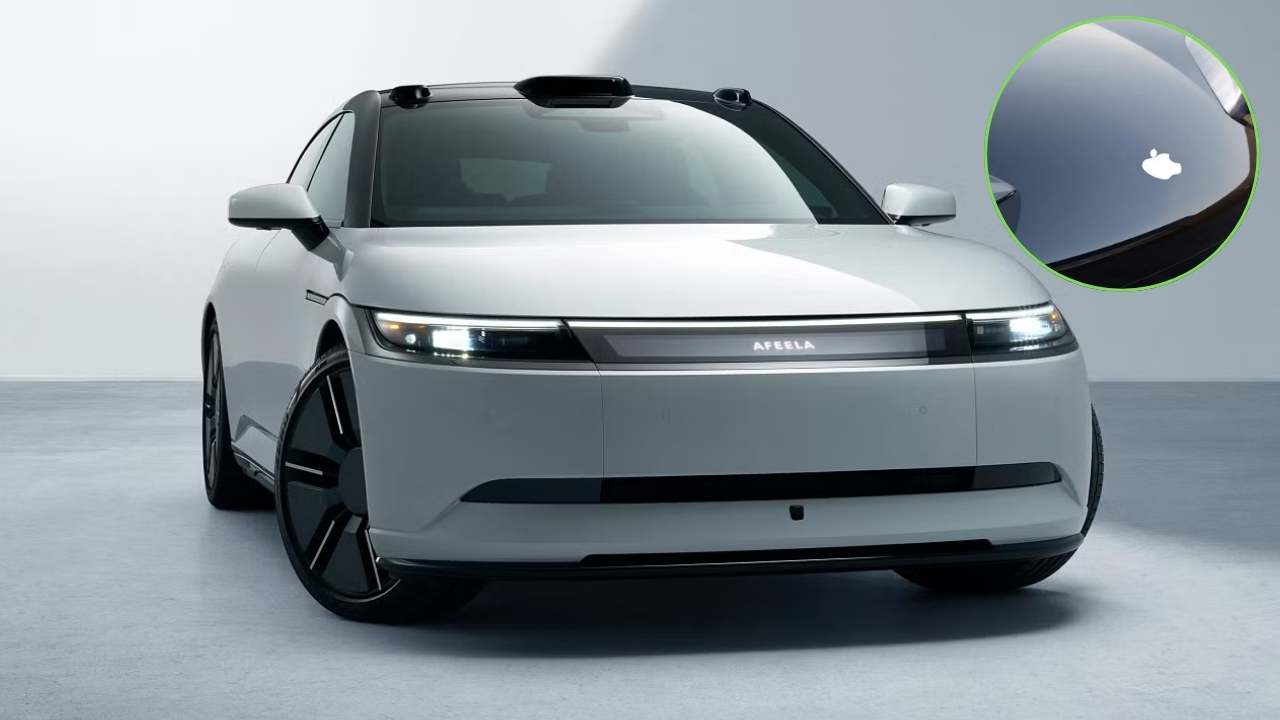A Black Mirror Twist : In a world where technology evolves at breakneck speed, the line between industries is blurring. Smartphone giants, once content with dominating our pockets, are now steering toward an unexpected frontier: car manufacturing. Companies like Apple, Xiaomi, and Huawei are venturing into the automotive industry, creating a seismic shift that feels straight out of a Black Mirror episode. This convergence of tech and transportation raises questions about innovation, control, and the dystopian possibilities of a hyper-connected future. What happens when the makers of your phone start building your car?
The Great Leap from Phones to Cars
Smartphone manufacturers have long been masters of integrating hardware, software, and user experience. Apple’s iPhone, Xiaomi’s budget-friendly devices, and Huawei’s telecom prowess have set benchmarks in consumer tech. Now, these companies are leveraging their expertise to disrupt the automotive sector. Apple’s secretive Project Titan, Xiaomi’s SU7 electric vehicle, and Huawei’s partnerships with automakers like Seres signal a bold pivot. But why cars? The answer lies in the parallels between smartphones and modern vehicles.
Today’s cars are essentially computers on wheels. Electric vehicles (EVs) rely on sophisticated software for battery management, autonomous driving, and in-car entertainment. Smartphone makers, with their mastery of chips, sensors, and operating systems, are uniquely positioned to excel in this space.
Apple’s A-series chips, for instance, could power advanced vehicle processors, while Xiaomi’s experience in scaling production could drive down EV costs. Huawei’s 5G expertise could enable seamless vehicle-to-everything (V2X) communication. This isn’t just a business expansion—it’s a natural evolution.
Yet, the move isn’t without risks. The automotive industry demands massive capital, complex supply chains, and regulatory compliance far beyond what phone manufacturing entails. Tesla, the poster child of tech-driven carmaking, faced near bankruptcy before turning profitable. Can phone makers navigate this treacherous terrain, or are they overreaching?
A Black Mirror Lens: Control and Surveillance
The Black Mirror twist lies in the implications of this crossover. Smartphone companies thrive on ecosystems—think Apple’s walled garden or Xiaomi’s interconnected IoT devices.
When these ecosystems extend to cars, the potential for control and surveillance skyrockets. Your phone already tracks your location, habits, and preferences. Now imagine a car that does the same, but with deeper integration into your life.
An Apple Car, for instance, could sync seamlessly with your iPhone, iPad, and Mac, creating a unified experience. Sounds convenient, right? But what if it locks you into Apple’s ecosystem, limiting third-party apps or forcing subscriptions for features like autonomous driving? Huawei’s cars, integrated with its HarmonyOS, could collect data for governments or corporations, raising privacy concerns, especially given the company’s geopolitical baggage. Xiaomi’s affordable EVs might democratize access but could also flood the market with data-hungry vehicles.
In a Black Mirror-esque scenario, these cars could become omnipresent surveillance hubs. Cameras, microphones, and sensors could monitor not just your driving but your conversations, moods, and destinations.
If your phone maker knows where you’re going before you do, what’s to stop them from nudging your behavior—suggesting routes past sponsored locations or prioritizing their services? The dystopian potential is chilling: a world where your car is an extension of Big Tech’s watchful eye.
Innovation or Overreach?
On the flip side, this convergence could drive unprecedented innovation. Smartphone makers bring a consumer-first mindset to an industry often criticized for sluggish progress. Traditional automakers like Ford or Toyota move slowly, bound by legacy systems and bureaucracy. Tech companies, by contrast, iterate fast.
Apple’s obsession with design could yield sleek, intuitive EVs. Xiaomi’s cost-cutting expertise could make electric cars accessible to the masses. Huawei’s 5G and AI could accelerate the rollout of fully autonomous vehicles.
The competition could also shake up the market. Tesla’s dominance in EVs has gone largely unchallenged by legacy automakers. Phone makers, with their deep pockets and tech prowess, could give Elon Musk a run for his money. Xiaomi’s SU7, priced competitively, already rivals Tesla’s Model 3 in China.
Apple’s rumored car, expected by 2026, could redefine luxury EVs. This influx of new players might lower prices, improve quality, and accelerate the shift to sustainable transport.
But innovation comes with trade-offs. Phone makers are notorious for planned obsolescence—think iPhones slowing down after a few years. What happens when this philosophy creeps into cars? A vehicle isn’t a gadget you replace every two years; it’s a long-term investment.
If Apple or Xiaomi pushes frequent upgrades or locks features behind paywalls, consumers could face a new kind of automotive lock-in. Imagine a car that requires an annual subscription for its full self-driving capabilities or stops working without the latest software update. The Black Mirror vibe intensifies.
The Road Ahead: Opportunities and Perils
The shift from phone to car manufacturing also reflects a broader trend: the fusion of industries in a tech-driven world. Companies like Sony and LG are exploring automotive ventures, while Google’s Waymo leads in autonomous driving tech. This convergence could redefine mobility, making cars smarter, safer, and greener. But it also raises ethical questions. Who owns the data your car generates? How transparent will these companies be about their practices? And what happens when a software glitch in your car leads to a real-world crash?
Regulatory hurdles add another layer of complexity. Governments worldwide are tightening rules on data privacy, emissions, and autonomous driving. Phone makers, accustomed to lighter oversight in tech, may struggle to comply. China’s strict EV regulations, for instance, favor local players like Huawei but could stifle foreign entrants like Apple. In the U.S., safety standards and labor disputes could delay launches. The road to carmaking is fraught with obstacles that even tech giants may find daunting.
A Dystopian Dream or a Bright Future?
As phone makers turn carmakers, the future teeters between utopian and dystopian. On one hand, their entry could democratize EVs, enhance safety through AI, and create seamless, tech-driven experiences. On the other, it risks amplifying corporate control, eroding privacy, and introducing new vulnerabilities. A Black Mirror episode might depict a world where your car refuses to start unless you’ve paid your Apple Car subscription or where Huawei’s vehicles report your every move to a central database.
The challenge lies in balancing innovation with accountability. Consumers must demand transparency about data usage and resist ecosystem lock-in. Regulators need to enforce strict privacy and safety standards. And phone makers must prove they can handle the responsibility of building machines that carry human lives.
This pivot from phones to cars is more than a business move—it’s a glimpse into a future where technology permeates every facet of life. Whether that future is a sleek, connected dream or a surveillance nightmare depends on the choices we make now. As the lines between industries blur, one thing is clear: the road ahead is anything but ordinary.

